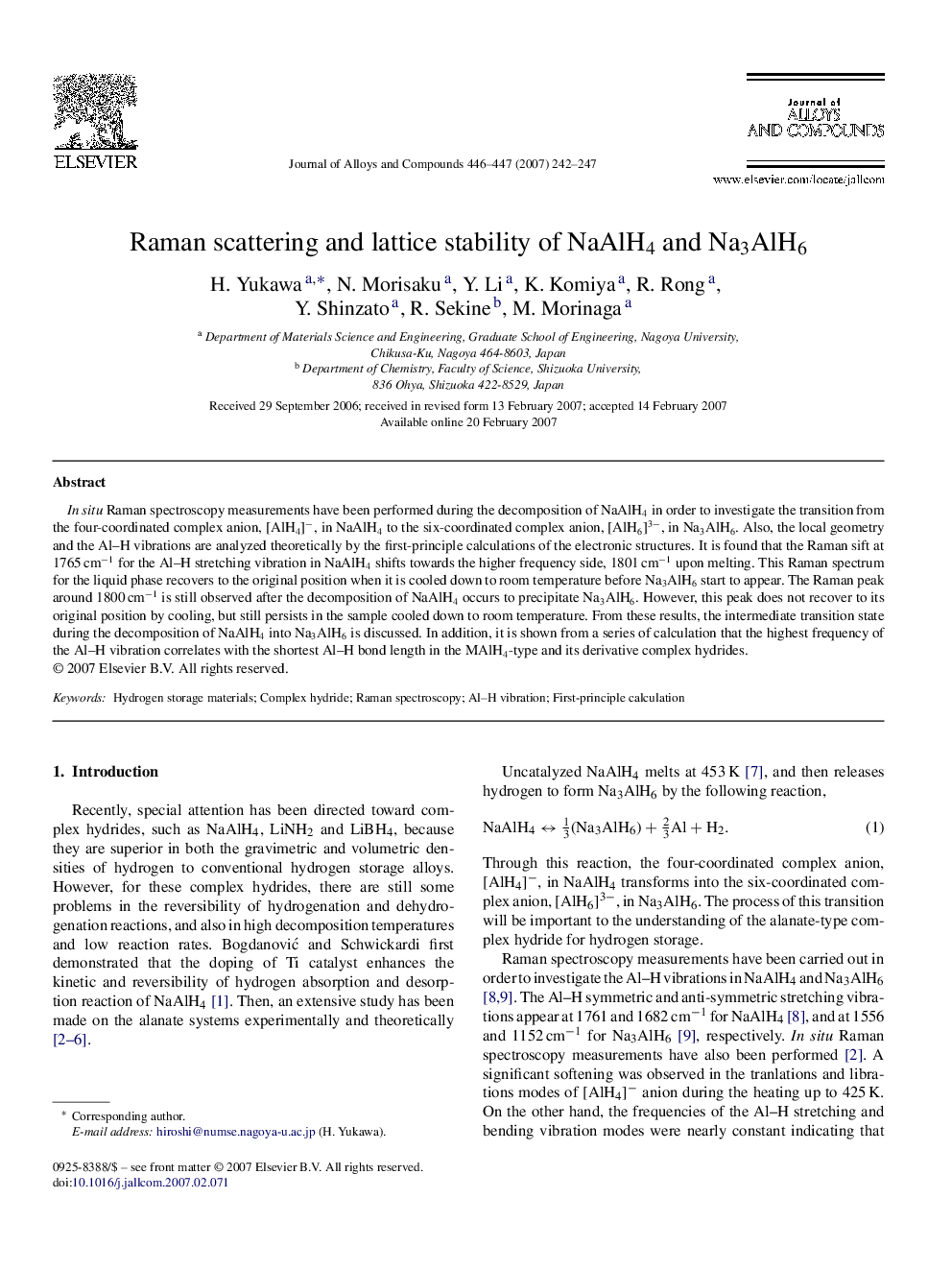| Article ID | Journal | Published Year | Pages | File Type |
|---|---|---|---|---|
| 1625939 | Journal of Alloys and Compounds | 2007 | 6 Pages |
In situ Raman spectroscopy measurements have been performed during the decomposition of NaAlH4 in order to investigate the transition from the four-coordinated complex anion, [AlH4]−, in NaAlH4 to the six-coordinated complex anion, [AlH6]3−, in Na3AlH6. Also, the local geometry and the Al–H vibrations are analyzed theoretically by the first-principle calculations of the electronic structures. It is found that the Raman sift at 1765 cm−1 for the Al–H stretching vibration in NaAlH4 shifts towards the higher frequency side, 1801 cm−1 upon melting. This Raman spectrum for the liquid phase recovers to the original position when it is cooled down to room temperature before Na3AlH6 start to appear. The Raman peak around 1800 cm−1 is still observed after the decomposition of NaAlH4 occurs to precipitate Na3AlH6. However, this peak does not recover to its original position by cooling, but still persists in the sample cooled down to room temperature. From these results, the intermediate transition state during the decomposition of NaAlH4 into Na3AlH6 is discussed. In addition, it is shown from a series of calculation that the highest frequency of the Al–H vibration correlates with the shortest Al–H bond length in the MAlH4-type and its derivative complex hydrides.
